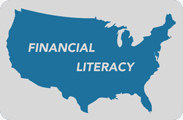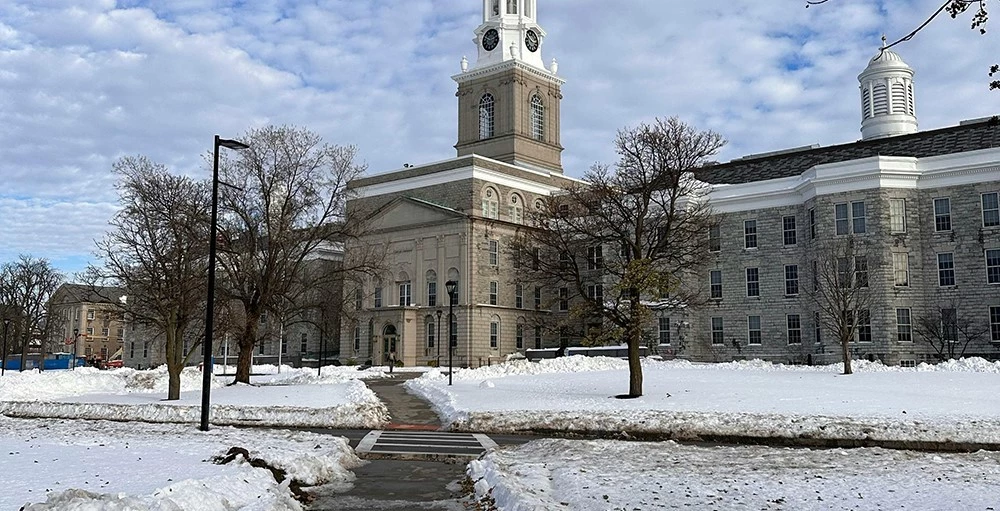Photo Courtesy of: Jirka Matousek
For the majority of students, borrowing for education is the norm. In order to fund not only their degree program but also the ancillary expenses that go hand in hand with attending school for a minimum of four years, it can be a challenge to keep up with costs simply based on income earned or pre-college savings. Even though student debt is a necessity for most, there are ways to keep the total long-term cost of borrowing low. In an effort to help students keep the financial lid on their student debt and reduce the potential for over-borrowing, educators can share these 10 easy student loan hacks early on.
Encourage students to borrow what they need, not what they want.
One of the easiest ways to get into student loan trouble is by over-borrowing. Students can quickly overextend themselves when it comes to taking on debt without being fully aware of the long-term financial implications of doing so. Repayment can be much less of a burden after graduation when students are (constantly) reminded that student loans should only be taken out for what is absolutely necessary to pay for education-related expenses. Debt should not be accrued for extracurricular activities or a lavish social life.
Encourage part-time employment or work-study programs to supplement income
In line with rule number one, students should be encouraged to supplement needs-based borrowing with their own earned income. Most college campuses provide ample opportunities to work part-time or provide mediums for work study that can reduce the total amount of debt necessary to get through a student’s college career. To remove the temptation to borrow, students should be made aware of these opportunities on a regular basis and be encouraged to take advantage of them.
| ||||||||||||||||||||
|
Reinforce the power of paying interest during deferment
For unsubsidized loans, most students are unaware that they are accruing interest even when the loans are in deferment. Instead of letting that interest balloon into hundreds or even thousands more after graduation, students can keep total student loan costs down—and keep their repayment terms more manageable—by paying accrued interest while in school.
Encourage pre-payment when possible
For loans that are not accruing interest while in school, students still have the option of paying down the balance while repayment is deferred. If students have extra funds from working a part-time job, sending a portion of that to their student loan servicer can make a world of difference in future repayment terms and total interest owed down the road.
Reinforce the power of smart spending
Developing a heavy coffee habit can come on early and strong during the first year of college; however, the campus coffee shop may not be the most budget-friendly place to fuel up each morning. If students are consistently coming to class with a to-go cup from the café around the corner or lunch from a nearby fast food place, it may be necessary to remind them of the need for smart spending and sticking with a budget. Students can save a hefty amount of cash and ultimately reduce total borrowing if they are willing to bring coffee or food from home.
Inform students of the auto-debit program
The majority of student loan servicers will offer students a 0.25% interest rate reduction on qualifying loans when they elect to have payments automatically deducted from a checking or savings account when they start to repay their loans. No matter the total balance of debt, this interest rate reduction can lead to an impressive amount of savings over the course of a decade (or more) of loan repayment.
Educate students on consolidation options
If students borrow for each and every semester of their college career, they can end up with a handful of various loans through different servicers upon graduation. Numerous monthly payments can make keeping up with debt obligations a serious challenge, but consolidating some or all of their loans can be a quick, easy fix. Most students are unaware of their options for consolidation, so it is important to educate them on the possibility to refinance their student debt into one manageable monthly payment. Consolidation can, in some cases, also lead to an aggregate interest rate deduction, further saving students money in repayment.
Inform students of the various repayment programs available
Another quandary students can find themselves in when entering repayment of loans directly relates to how much their payment each month ends up being. The standard repayment option for student debt is over the course of ten years, but for students who have more than $30,000 borrowed, the monthly payment on this schedule can be a devastating hit to the wallet. Students should be informed of their various repayment options, including income-based or income-contingent, graduated, and extended repayment terms. Although these may result in higher total cost of student debt, the terms may prove more favorable in helping students steer clear of default.
Educate students on the powerful tax incentives student loans provide
There are numerous tax advantages students can utilize to help reduce the total cost of borrowing both during school and after graduation. Tax credits as well as deductions for student loan interest payments are available to certain qualifying students and graduates that have the potential to create bigger refunds each and every year. In order for students to get the most out of their borrowing, it is important they are made aware of these tax advantages and apply the additional tax savings toward pre-payment or chipping away at accrued interest.
Encourage the use of a financial professional
We as educators and administrators do not have all the answers or remedies for students when it comes to their specific borrowing circumstances. Fortunately, there are a range of professionals able and willing to help students understand their options and the implications of one repayment strategy versus another. Financial planners or advisors as well as CPAs can provide information above and beyond what we are able to, and ultimately, can lead students on the path toward financial wellness for both the short-term and long-term. Encourage students to reach out to trusted advisors in the community and network with financial professionals to whom you may refer students. You may be surprised how many are willing to lend a hand.
In order to help students be successful throughout their years at college and well beyond graduation, they must have a solid understanding of how financial literacy and debt management affect their current and future opportunities. Sharing these easy student loan hacks with students will assist them in getting and staying on a beneficial financial path early in their lives.











